Main menu
Common skin conditions

NEWS
Join DermNet PRO
Read more
Quick links
Skin problems in farmers — extra information
Skin problems in farmers
Author: Brian Wu PhD. MD Candidate, Keck School of Medicine; Chief Editor: Dr Amanda Oakley, Dermatologist, Hamilton, New Zealand, December 2015.
Introduction
Occupational risks
Understanding occupational skin disease
Skin conditions seen in farmers
Workplace risk assessment
Personal protective equipment
Recommended hand care for farmers
Treatment
Introduction
Farming is a widespread, worldwide occupation. It is estimated that between 50% and 60% of farmers will develop some form of skin condition within 5 years of beginning their occupation.
Why do farmers have skin problems?
Factors that contribute to skin conditions in farmers include:
- Long-term exposure to outdoor environmental conditions
- Solar radiation
- Repeated contact with chemicals from plants, pesticides, herbicides and fertilisers
- Risk of allergic reactions from arthropod stings and bites
Understanding the causes of occupational skin disease
Intact, healthy skin is an important part of the immune system and provides defense against physical, biological or chemical agents. Farming work may jeopardise the integrity of the skin.
Skin conditions seen in farmers
The most common skin conditions associated with farming are contact dermatitis and sun damage / skin cancer.
Irritant contact dermatitis
Irritant contact dermatitis is common in agricultural workers.
- Inflammation is due to irritant substances coming into contact with the skin
- Signs and symptoms include red, blistered, scaling or cracked skin (dermatitis)
- Exposure can be acute or chronic
- An irritating rash can develop within a few hours of exposure or develop gradually with on-going exposure to irritants
Irritants include plants, acids and alkalis, frictional damage, animal waste, water and many other items.
Allergic contact dermatitis
Allergic contact dermatitis is due to an immunological response to a sensitiser. This form of dermatitis may spread to affect areas that were not directly exposed to the sensitiser.
In farmers, common contact allergens include:
- Sesquiterpene lactone (compositae) and toxicodendron (rhus, poison ivy) in plants
- Rubber accelerants
- Pesticides including insecticides
- Components of sunscreens including preservatives
Contact dermatitis
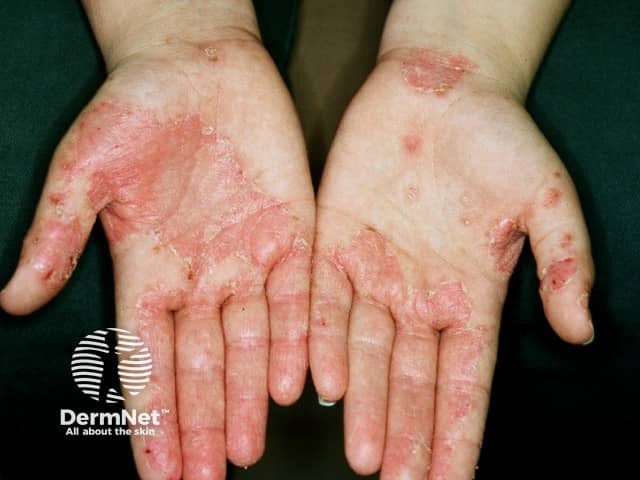
Nonspecific hand dermatitis
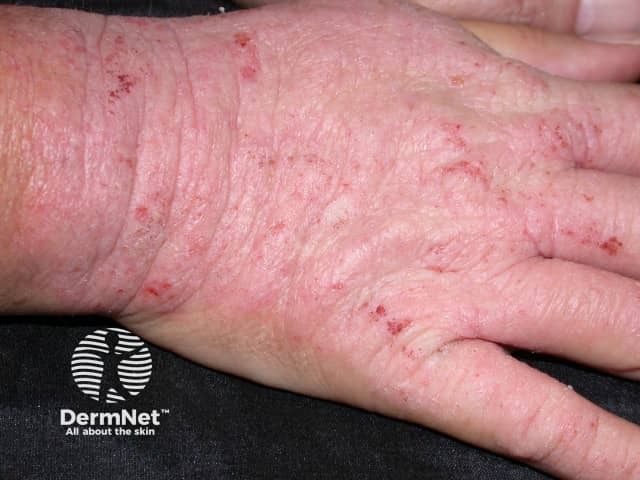
Hand dermatitis due to rubber allergy
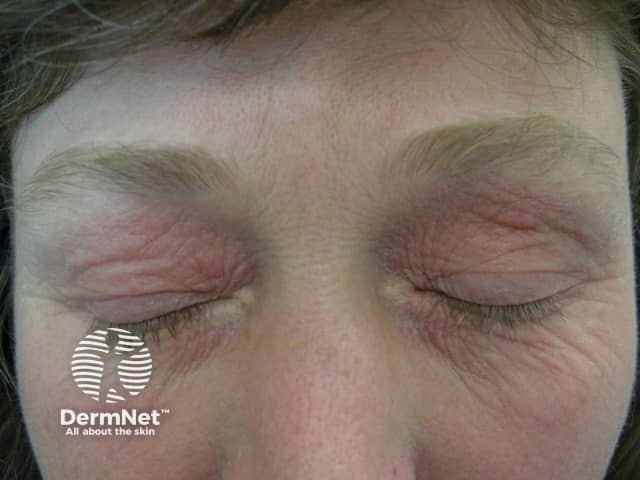
Eyelid dermatitis due to airborne compositae allergy
Reactions to bee and wasp stings
Allergic reactions to bee and wasp stings result in local swelling, and in severe cases, in urticaria and anaphylaxis. Adrenaline for injection should be kept on hand in case of severe allergic reaction.
Localised swelling due to bee and wasp stings
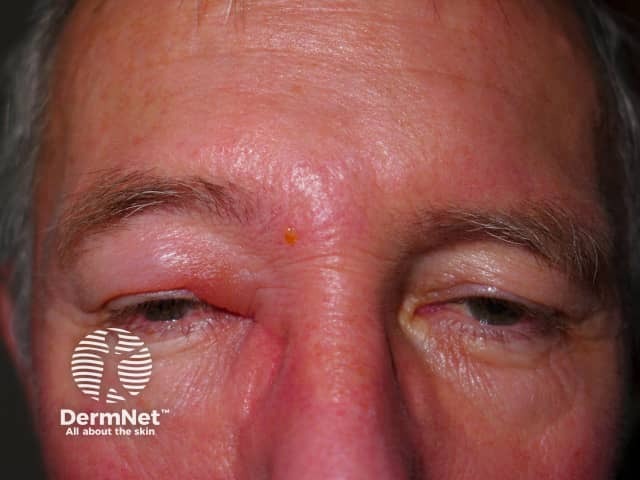
Bee sting reaction
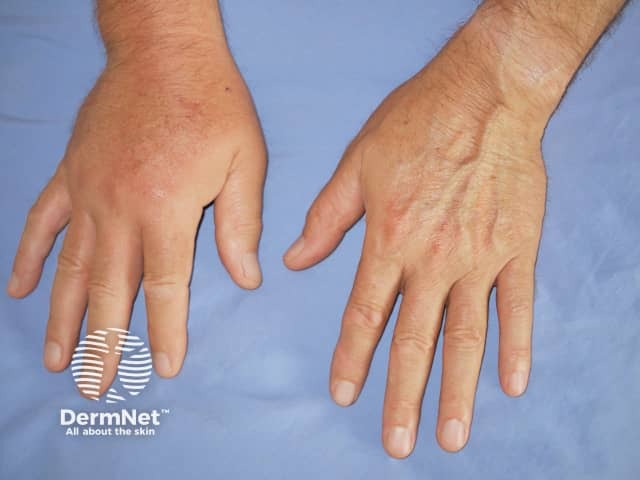
Bee sting reaction
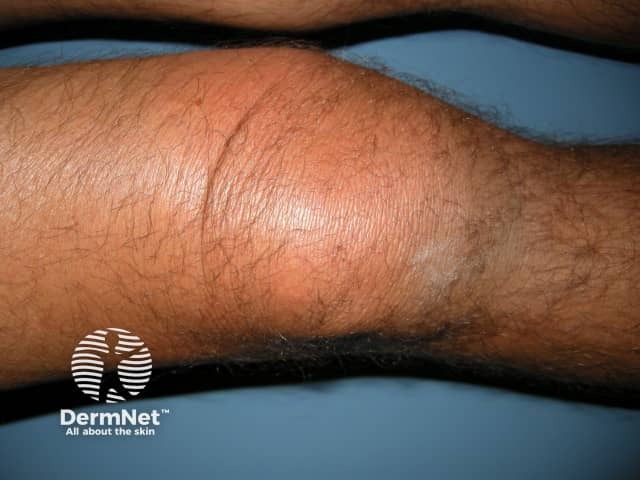
Bee sting reaction
Sun damage
Sun damage is due to prolonged exposure to solar radiation and is a serious problem for fair-skinned farmers. Damage is due both to sunburn and cumulative exposure to sunlight.
The damage is mainly due to ultraviolet radiation (UVA and UVB). UV levels depend on:
- Angle of the sun in the sky (high in the middle of the day and in the middle of summer)
- Hemisphere: the Southern hemisphere has a higher UV index than in the Northern hemisphere
- Cloud cover and environmental pollution
In New Zealand, follow the recommendations of the Sun Protection Alert, published as part of weather forecasting.
Other risk factors for significant sun damage in farmers include:
- Long duration of exposure
- Wearing minimal clothing
- White skin that burns easily in the sun
- Light-coloured eyes and hair
Prolonged exposure to the sun leads to premature skin aging such as wrinkling, pigmentary changes and telangiectasia. Precancerous changes include actinic keratoses, actinic cheilitis and intraepidermal carcinoma.
Sun damage
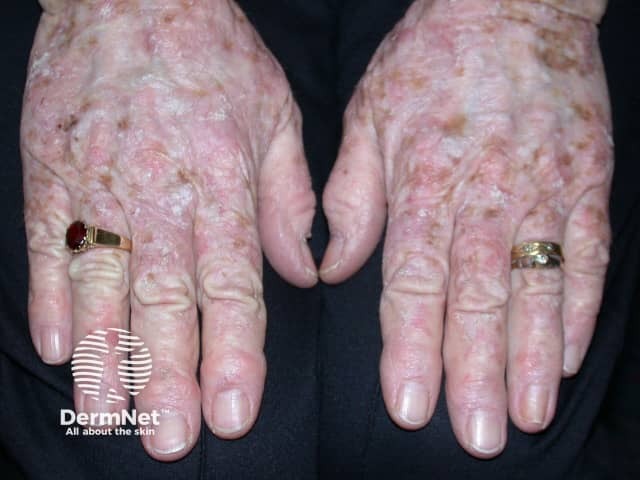
Actinic keratoses
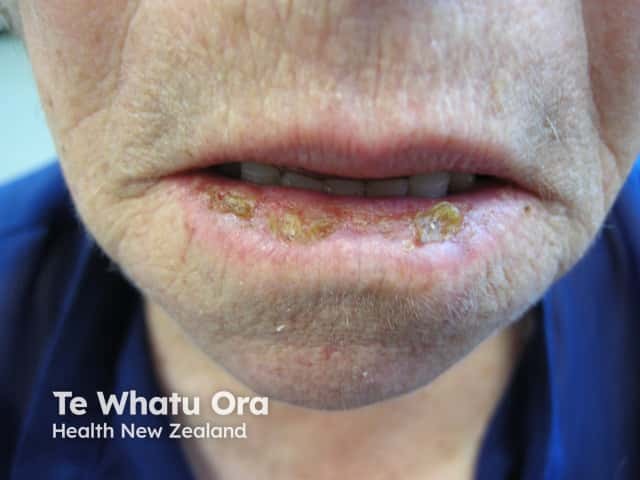
Actinic cheilitis

Photoageing
Skin cancer
Agricultural work also increases the risk for skin cancer, mainly because of prolonged sunlight exposure.
- Specific chemicals such as arsenic — which are common components in agricultural practice — have also been associated with skin cancer development.
- Because skin cancer has a long latent period and a slow progression, many years can elapse between exposure and disease development.
- Basal cell carcinoma, squamous cell carcinoma, and melanoma are the most common forms of skin cancer.

Basal cell carcinoma
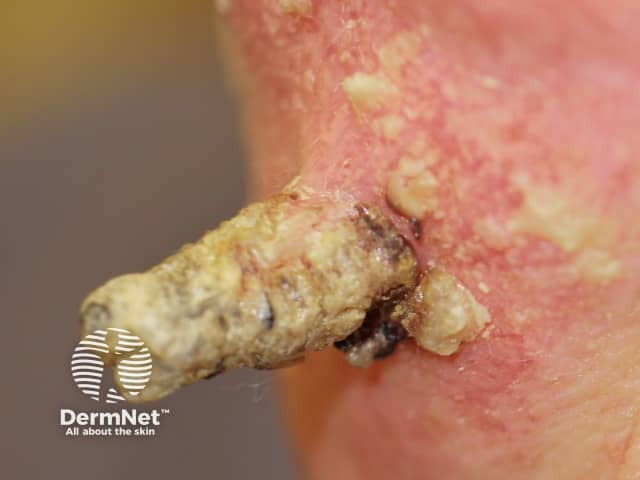
Squamous cell carcinoma / cutaneous horn
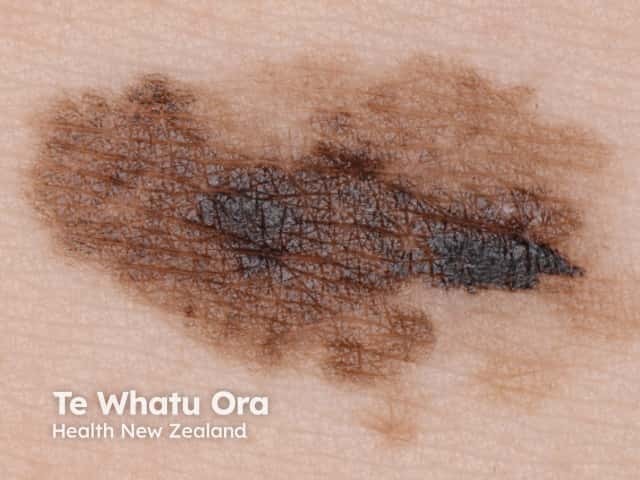
Superficial spreading melanoma
Skin infections
Farmers may be prone to specific infections associated with agriculture and animal husbandry. Examples include:
- Tinea corporis due to Trichophyton verrucosum (cattle ringworm)
- Orf due to scabby mouth in sheep
- Listeriosis
- Anthrax
- Cat scratch fever
- Plague
- Tularaemia.
Workplace risk assessment
Assessing the workplace and promoting worker safety should include:
- Educating farmers and other agricultural workers on personal hygiene, use of protective clothing and equipment
- Substituting harmful substances (like certain pesticides) with less toxic products
- Separating farmers from harmful substances, using containers, barriers or other mechanisms
- Automation of work/use of protective devices when doing work that may damage the skin
- Proper storage, handling and waste disposal of toxic substances
Personal protective equipment
Personal protective equipment, including gloves, goggles and aprons, can help to decrease the level of exposure to irritants or sensitisers by keeping the skin covered. These devices have to be used consistently, taken on and off in the proper manner, and the right glove must be selected for the specific type of work undertaken.
Recommended hand care for farmers
To take care of their hands/skin properly, it is recommended that farmers:
- Wash hands following the proper procedure and use a mild soap or cleanser
- Use waterless hand cleansers to remove grease and oils; abrasive soap should only be used if absolutely necessary
- Barrier cream should be selected to protect against specific chemicals; they are not as effective as gloves (which are worn without barrier cream)
- When out in the field away from proper hand-washing facilities, disposable towels and hand cleansers should be used
Treatment of occupational skin disease in farmers
Begin with a thorough assessment of presenting complaints, relevant medical history, specific occupation, chemicals and other substances in regular use, and a full physical examination.
Treatment will vary depending on the nature of the complaint.
Dermatitis is treated by avoiding the cause (if possible), and:
- Wet dressings
- Topical and oral corticosteroids
- Emollients and barrier creams
Photoageing and skin cancers will require individualised treatment, which may include creams, cryotherapy and skin surgery.
The presence of precancerous lesions and skin cancers should lead to lifelong daily protection from further sun exposure:
- Broad-brimmed hat
- Long sleeves and long trousers
- SPF 50+ sunscreens applied to exposed skin every 2 hours while outdoors
References
- Work-Related Skin Disorders: Risk Factors and Prevention: A Survey of Agricultural Employees in Washington State. Washington Department of Labor and Industries. 2010.
